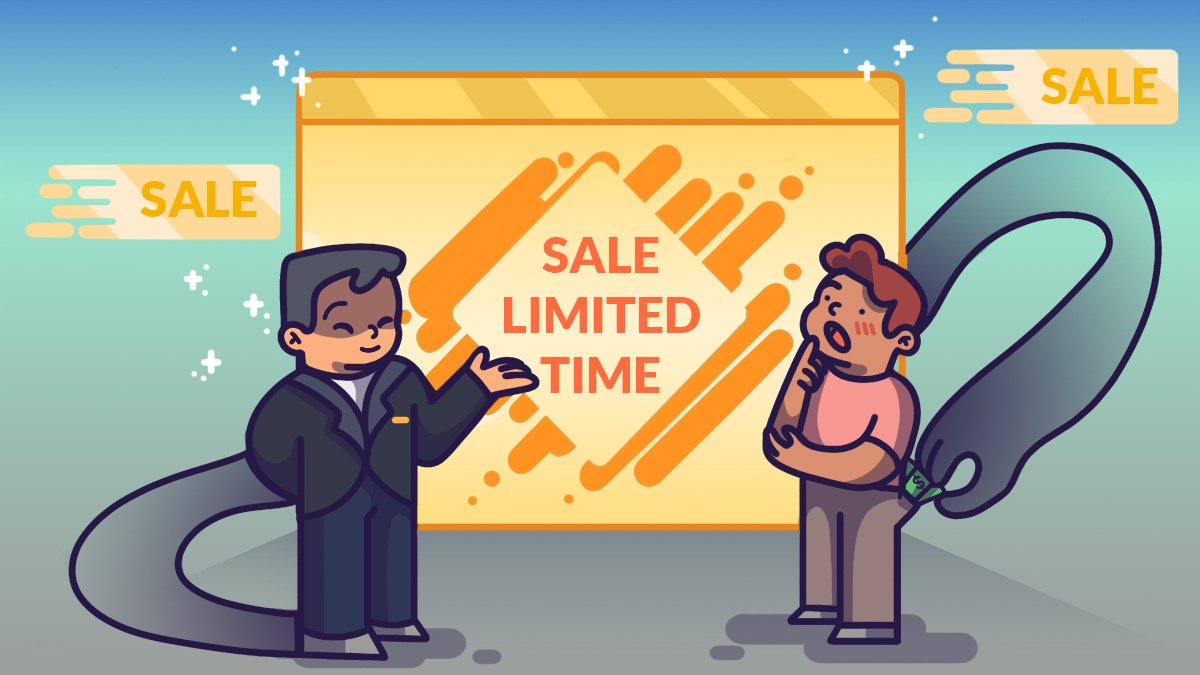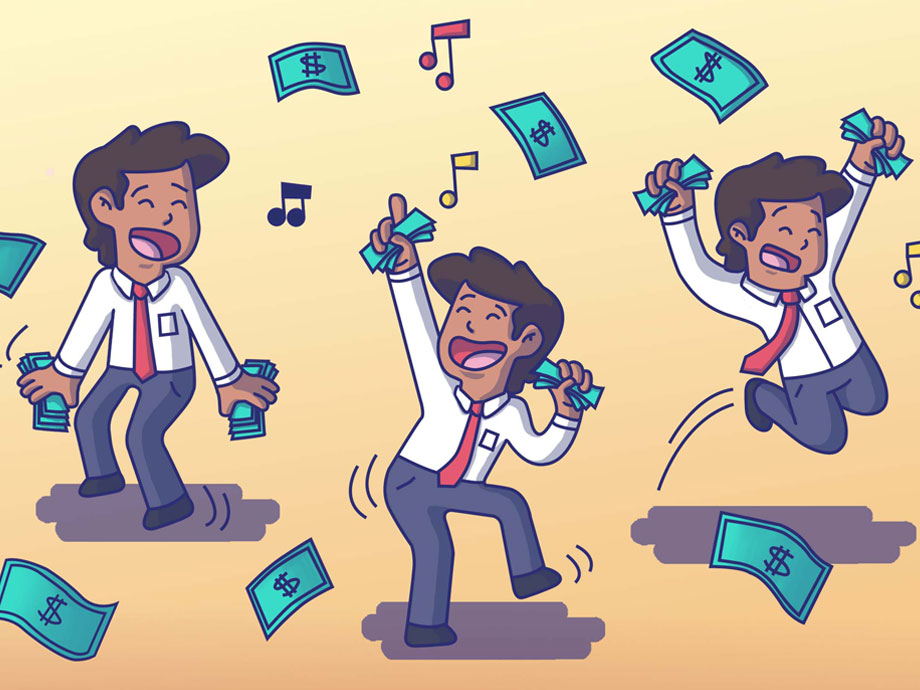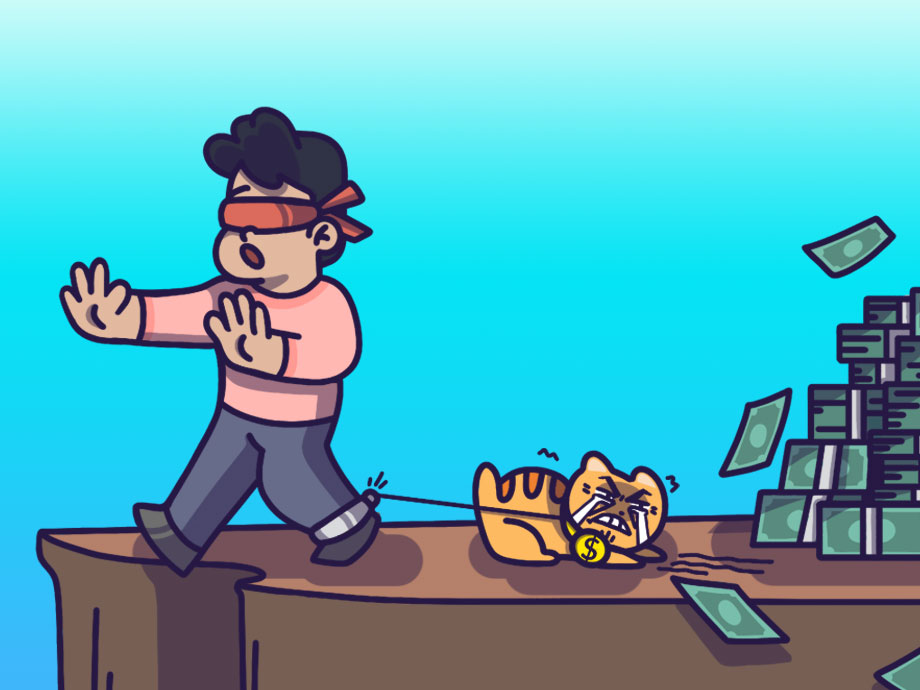Budgeting | Personal Finance | Article
Tricks Companies Use to Make You Buy Stuff (You Don’t Need)
by The Simple Sum | 2 Feb 2021 | 5 mins read

Ever walked into a supermarket or scrolled through Uniqlo.com and ended up with more things in your basket than you bargained for?
Of course you have.
Sure, you can blame poor self-control or bad shopping habits, but sometimes it feels like there are unseen forces at play, like a puppet master gleefully guiding your eyes and hands to click ‘buy’ during a late-night online shopping spree.
Or when you’re reading the assortment of signs and sale price markers in the ice cream aisle of the supermarket and all of a sudden you’re carrying a basket that feels much heavier than intended.
As much as it’s easy to blame ourselves, it’s worth noting that there is a degree of psychological manipulation at play when you’re shopping.
Companies and marketers know that our brains have countless blind spots and weaknesses that lead us to make misguided decisions, and they use this to their advantage.
It makes perfect business sense for companies to employ psychological tactics so they can reap the profits – just as it makes perfect sense for you to be aware of these methods so you can make more informed decisions and be a bit more mindful when shopping.
The Decoy Effect
The Paradox of Choice, a term coined by psychologist Barry Schwartz in 2007, argues that greater choice complexity increases anxiety and interferes with decision-making. To reduce anxiety, our brains will try to simplify the selection process by choosing just a few criteria (e.g. price and quantity) to determine the best value for money.
By manipulating these key choice attributes, companies employ ‘decoys’ designed to steer you in a certain direction while giving you the feeling that you’re making a rational and informed choice. This clip of Dan Ariely’s TED talk perfectly illustrates the decoy pricing strategy.

Sounds like a cognitive trap? Sure, but a trap is only a trap if you don’t know about it.
The decoy effect is a form of ‘nudging’, and while it can be used for deceitful means, it’s worth noting that not all forms of nudging are manipulative, especially when the intention is well-meaning. It’s a social marketing tactic that has proven successful in persuading people to recycle, conserve energy or eat healthier.
The Power of 9
Ever wondered why prices in the supermarket often end with 9? We’ve been conditioned to associate prices ending with 9, 99 or 95 with discounts and better deals. They’re called ‘charm’ prices for a reason.
Consumer psychologists attribute it to the ‘left-digit effect’, where we read a price like $5.99 as $5 because our brains tend to encode the first number before we read all the digits.
Case in point: before iTunes, people were downloading music for free. Then Steve Jobs wanted to start charging people for it. How did he convince people to part with their money for something they were getting for free? By charging them 99 cents a song.
Many studies have shown that products with charm prices sell better than those with ‘nearby’ prices, but the explanation why numbers ending with 9 work better continues to be a subject of debate.
Price Font Size
Sale price markers, with the old price mentioned, are often used by retailers to emphasise how good of a deal the consumer is getting, but this is not what makes it effective.
Marketing professors at Clark University and The University of Connecticut found that consumers perceive sale prices to be a better value when the price is written in a small font rather than a large, bold typeface.
So if you see a retailer using a bigger font size for the sale price and a smaller font size for the original price, they’re probably doing it wrong, because apparently in our minds physical magnitude is related to numerical magnitude.
If there’s anything more powerful than the number 9, it’s probably this.
The Illusion of Scarcity and Urgency
A well-used strategy to drive up sales, the illusion of urgency and scarcity usually comes in the form of tactics such as “limited-time offers” or “limited to 5 items per customer” promos.
It forces you to think “oh, I need to get this now or I’ll be paying more if I buy later”, or “this is hard to come by, I should buy this”.
Companies selling high-value products such as luxury watches and limited-edition sneakers commonly use the “limited to X of items per customer” tactic to avoid getting products getting sold on the grey market (read: unauthorised resellers or ‘flippers’), but it’s hard not to admit that it would tempt people into buy more than they would.
We Hate Losing More Than We Hate Not Winning
Behavioural economists believe that we value losses and gains differently and that we make decisions based on ‘perceived gains’ rather than ‘perceived losses’.
If a person is faced with two choices that are both equal, with one presented in terms of potential gains and the other in terms of possible losses, the former will be chosen.
This is known as the “Loss Aversion” theory, which plays to the idea that we are naturally risk-averse. The rational customer would rather not spend his or her money at all if the purchase has enough risk of being a “loss” – even if it means missing out on the product or service’s benefits.
So what do companies do to tackle this? They tell you what you stand to lose if you don’t buy. It’s one of the most important sales tactics and we see it all the time in advertising headlines – telling people how their products will help them avoid a “loss” is much more persuasive than telling them what they could gain.













